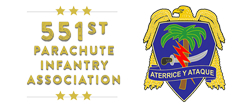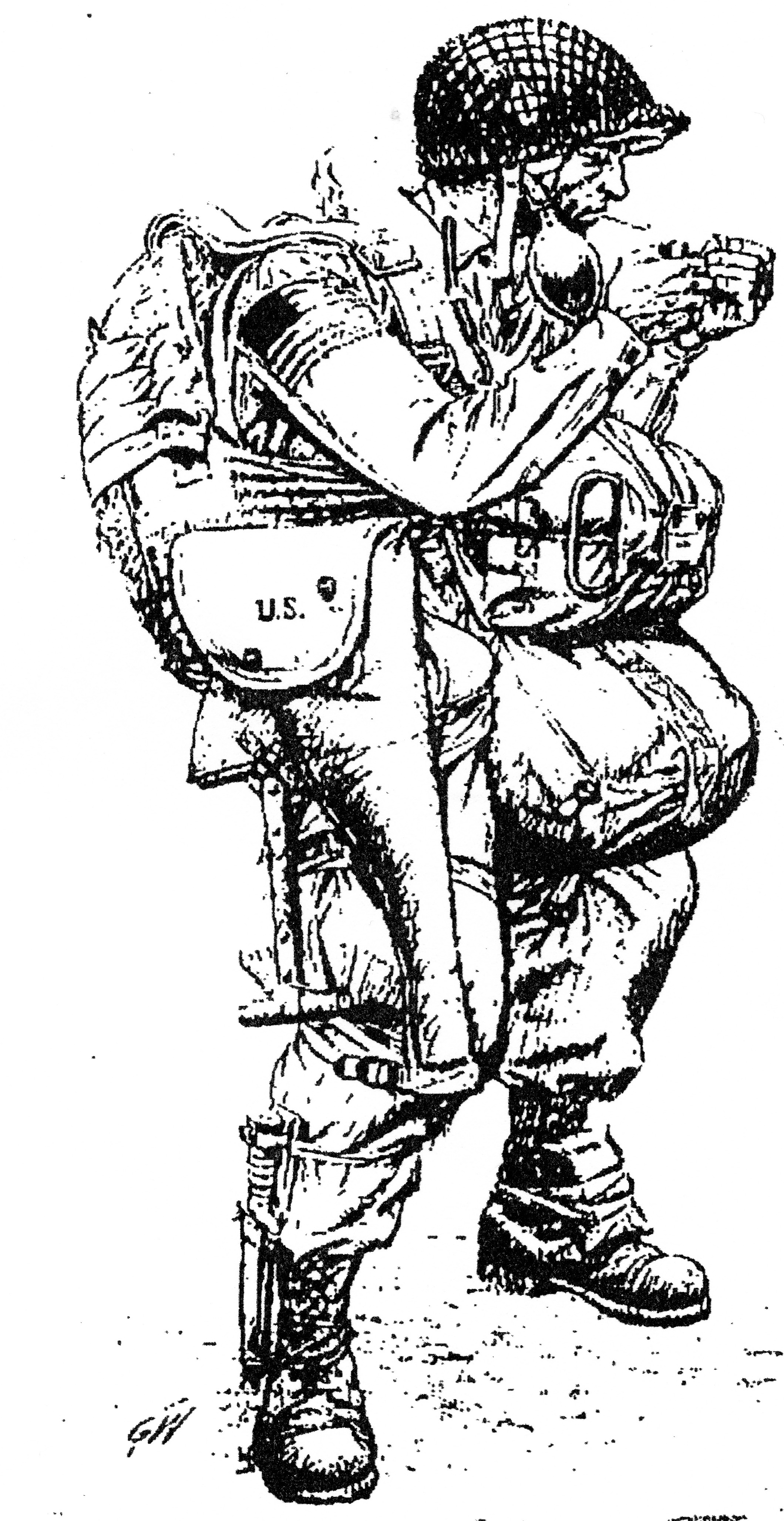
551st Patch
Summarized from ‘Messengers Of The Lost Battalion pg. 61-62, 77:
In the mid-1980s the insignia authority Les Hughes was commissioned by the American Society of Military Insignia Collectors to identify the origins of the mysterious 551st patch, including its designer. Hughes found himself in a maelstrom. At the time, he identified two possible artists, but it took another decade to narrow it to one…B Company’s Private Vincent Artz, who broke his skull in a fall from a glider in 1943 that resulted in him leaving the GOYAs and the Army forever. Hughes noted that Artz confirmed that it was Joerg himself who spied him sketching one day and assigned him the insignia design and a little studio all his own for accomplishing it. Artz had the completed task secreted in his hip pocket in a matter of days, then “dog-robbed” six weeks for his own painting and sketching: “I milked it”….Hughes concluded that the patch was born and made in Panama, but hidden, like the 551st’s clandestine life there, until 1943, when it was distributed at Camp Mackall.
Hughes pointed out that the GOYA’s insignia is one of the very few in the U.S. military that uses flora rather than fauna; the green palm tree at the center of a blue felt shield is leaning, not at attention. Is this the Spotlight Brown instinct? A white machete slices the tree base and almost meets the lean, as if it were dancing with the tree. “We were crazy over the tropics,” Artz explains. A maroon lightning bolt slants across the scene (a paratrooper cliché for quick force). A scroll at the bottom announced in Spanish – this appears to be the only U.S. Armed Forces patch using a foreign language – Aterrice y Ataque (Alight and Fight). Encompassing all is an eagle of silver bullion thread in a phoenix pose, looking sideways. The claws, unlike many paratrooper patches, are hidden.
On a fateful late November jump at Mackall, the insignia designer Vincent Artz fell vertically into the canopy of Lieutenant Oliver Hord. Several chutes collapsed while Artz continued to the ground with a near streamer, fracturing his skull. He remained unconscious for forty-eight hours. The glider jumps stopped. (Pg 77, Messengers of the Lost Battalion)
Summarized from Mr. Artz’s obituary:
Following his time with the U.S. Army Vincent R. Artz, rose like a phoenix, symbolic in both his patch design for the 551st PIB and his own life, in the development of arts programs across the state of Pennsylvania and was the former general manager of the Pittsburgh Opera. He passed away at Carlisle nursing home of complications from progressive supranuclear palsy on September 5th, 2005. He was 81.
Mr. Artz was an accomplished painter who also excelled at the business side of arts groups. As the first executive director of the Pennsylvania Council on the Arts from 1966 to 1971, he was the force behind the Harrisburg Arts Festival in 1967 — considered the state’s first. As curator of fine arts for the William Penn Memorial Museum, he mounted several important exhibitions, including a retrospective of N.C. Wyeth’s paintings and a comprehensive exhibit of Charles Demuth. During this time, he and his wife, Joanne, owned and operated the Vincent R. Artz Gallery in Camp Hill, Cumberland County.
He also served as arts management consultant to the A.W. Mellon Educational and Charitable Trust. During that time he was responsible for the state’s first major African-American artist exhibition, held at the Selma Burke Arts Center in Pittsburgh. While his overriding effort was to educate the public on the importance of arts in society, he also was a mentor to many struggling artists. It was not unusual for artists to knock on his door, seeking advice.
Mr. Artz took over as general manager of the Pittsburgh Opera in 1975. At that time, fund raising for arts programs was in its infancy, but the connections he had made in Harrisburg and through his time with the A.W. Mellon trust gave him plenty of funding leads. His love of opera was born as a youth in Mohnton, Berks County, when his mother used to insist he listen to opera broadcasts on Saturday afternoons instead of playing baseball. Even though he was underage, Mr. Artz enlisted in the U.S. Army for World War II, serving with the 551st Parachute Infantry Battalion, which lost more than 80 percent of its men during the war. Mr. Artz was wounded and honorably discharged.


